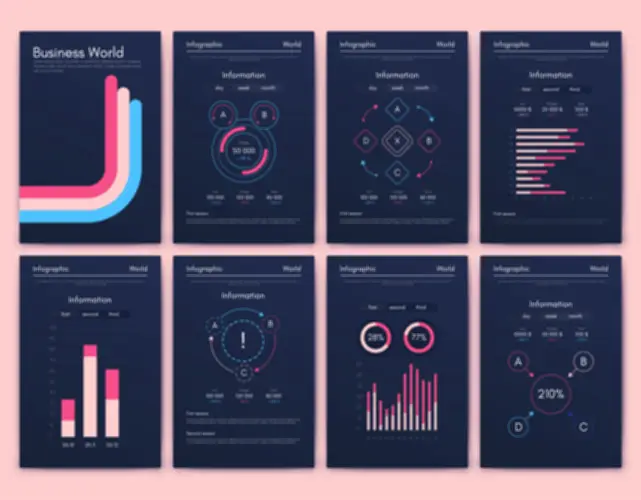These fashions have achieved groundbreaking ends in pure language understanding and are widely used throughout numerous domains. The greatest talents of those models come with even larger challenges regarding their scalability and ecological footprint. Coaching state-of-the-art fashions requires thousands of cores running for weeks, and with the scale of power consumption comes the question of sustainability. Therefore, there are makes an attempt at making energy-efficient methods for coaching through adaptive computation or sparse transformer architectures that are to a considerable extent low-power with out a lot change in efficiency.
While the convolutional representation of SSMs allows training parallelization, it is not with out its own issues. The kernel we’re utilizing to course of the input sequence is decided by the mannequin parameters (matrices A, B, C, and D) and sequence size, as we saw in step one of the kernel derivation. Thus, the kernel would be recomputed throughout inference based mostly on the enter sequence, which is inefficient.
Unsupervised Studying For Entity Extraction
Time-scale adaptation enables effective capturing of each short-term (immediate) and long-term (distant) relationships between parts in the knowledge. They inherently preserve a state containing the sequence’s context, making them more computationally environment friendly than transformer-based models. Transformers achieve parallelism through the self-attention mechanism, which simultaneously computes consideration weights between all pairs of tokens in the sequence. This is possible because the computations contain matrix operations that may be parallelized, allowing the mannequin to course of whole sequences at once. In Combining Recurrent, Convolutional, and Continuous-time Models with Linear State-Space Layers, the authors explored a number of methods for discretizing state-space fashions to adapt them for sequence modeling duties. They finally chosen the Generalized Bilinear Remodel (GBT), which successfully balances accuracy (by avoiding oversampling) and stability (by avoiding undersampling).

– The new model outperforms earlier models on 18 NLP duties, including query answering, natural language inference, sentiment analysis, and document ranking. Transformer-based architectures have remodeled NLP, providing sturdy frameworks for text understanding with significant improvements over previous strategies. Their capability to seize context, scale with knowledge, and adapt to varied duties, as evidenced by current research and the statistical insights from the provided images, underscores their importance. The first picture highlights the models’ proficiency in dealing with long-text distributions, the second demonstrates their adaptability to conditional shifts, and the third showcases their function extraction capabilities in classification tasks.
The Transformer is carried out in our open source launch, as nicely as the tensor2tensor library. Therefore, a key subsequent step is to include a mechanism into SSMs that allows them to concentrate on the most related components of the state rather than processing the whole state uniformly. This is what the Mamba mannequin structure addresses, which we’ll discover in the upcoming second part of the sequence. Thus, the S5 layer operates solely in the time domain as an alternative of getting the convolutional and frequency area. This is a crucial improvement as a result of it allows the time complexity per layer to be O(N log L) instead of O(NL), leveraging parallel computation over the sequence length while reducing the reminiscence overhead. In the LSSL, the state is multiplied by the matrix A to provide the up to date model of the state.
CoQA is a conversational question answering dataset.In Contrast with SQuAD, CoQA has several unique characteristics. First, the examples in CoQA are conversational, so we have to reply the enter query based on dialog histories. Second, the solutions in CoQA could be free-form texts, together with a big portion is of yes/no answers.
How Does Pure Language Processing (nlp) Work?
Some frameworks permit you to prepare an NLU out of your local pc like Rasa or Hugging Face transformer models. These usually require more setup and are typically undertaken by bigger improvement or information science teams. Everything that we’ve described so far may appear pretty simple, so what’s the missing piece that made it work so well? Cloud TPUs gave us the liberty to rapidly experiment, debug, and tweak our models, which was crucial in permitting us to move beyond current pre-training techniques. The Transformer model structure, developed by researchers at Google in 2017, also gave us the foundation we would have liked to make BERT profitable.
Programming Languages, Libraries, And Frameworks For Natural Language Processing (nlp)

To assist close this hole in data, researchers have developed quite a lot of techniques for coaching general purpose language representation models utilizing the large amount of unannotated text on the internet (known as pre-training). The pre-trained mannequin can then be fine-tuned on small-data NLP tasks like query answering and sentiment evaluation, leading to substantial accuracy enhancements in comparison with training on these datasets from scratch. Natural Language Processing (NLP) has witnessed a transformative leap with the appearance of transformer-based architectures, which have considerably enhanced the power of machines to know and generate human-like textual content. This paper explores the advancements in transformer fashions, such as BERT and GPT, specializing in their superior efficiency in text understanding duties compared to traditional strategies like recurrent neural networks (RNNs)1.
Cloud-based NLUs can be open supply models or proprietary ones, with a spread of customization choices. Some NLUs let you upload your data by way of a person interface, while others are programmatic. In the quickly evolving world of artificial intelligence, few advancements have had as profound an influence as Large Language Models (LLMs). Rajnish Jain, a distinguished researcher within the field, explores the innovations driving these models and their implications for Natural Language Understanding (NLU) in his newest work. His insights delve into the breakthroughs that make these fashions more efficient, accessible, and able to dealing with advanced linguistic duties.
- Whereas the enhancements of S4 over the original LSSL primarily concentrate on decreasing the model’s computational complexity, S5 aimed to simplify the structure, making it extra efficient and simpler to implement while sustaining or bettering efficiency.
- To incorporate pre-trained models into your NLU pipeline, you’ll be able to fine-tune them along with your domain-specific data.
- Thus, the HiPPO matrix can be used to regulate the replace of a model’s context or hidden state.
- The low-rank matrix can be represented as the product of two much smaller matrices.
- This is a vital enchancment as a result of it permits the time complexity per layer to be O(N log L) as an alternative of O(NL), leveraging parallel computation over the sequence length while lowering the reminiscence overhead.
(A proof is given within the appendix of the paper.) However, in the occasion that they were to make use of the diagonal matrix from the DPLR approximation, the approximation would have produced very different dynamics than the unique construction. By Way Of experimentation, Smith and colleagues discovered that they might characterize the HiPPO-LegS matrix as a standard plus low-rank (NLPR) matrix, the place the conventional part is known as HiPPO-N, which can be diagonalized. For the convolutional form, the convolutional kernel was lowered to require solely O(N log L + L log L) operations. This was achieved by altering the approach used to derive the kernel, which included utilizing the inverse Fast Fourier Remodel (iFFT) and making use of the Woodbury id to reduce the low-rank time period of matrix A.
You can use techniques like Conditional Random Fields (CRF) or Hidden Markov Models (HMM) for entity extraction. These algorithms bear in mind the context and dependencies between words to identify and extract particular entities mentioned within the text. You Will need a various dataset that features examples of user queries or statements and their corresponding intents and entities. Ensure your dataset covers a variety of scenarios to make sure the Mannequin’s versatility. For instance, a chatbot can use sentiment analysis AI Software Development Company to detect if a consumer is joyful, upset, or annoyed and tailor the response accordingly. Deep studying algorithms, like neural networks, can learn to categorise textual content primarily based on the consumer’s tone, feelings, and sarcasm.